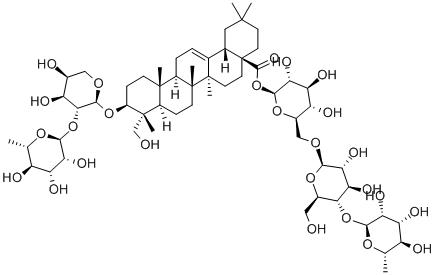Lack of pharmacopoeia standard for pesticide residues
-
Last Update: 2013-07-12
-
Source: Internet
-
Author: User
Search more information of high quality chemicals, good prices and reliable suppliers, visit
www.echemi.com
In the 2005 edition of the Chinese Pharmacopoeia, only seven or eight kinds of medicinal materials were listed to be tested, and many only checked for ash and extract Even in the new Chinese Pharmacopoeia published in 2010, there are very few pesticide residue standards, and only three kinds of pesticides (DDT, BHC and PCNB) have limited standards on two kinds of medicinal materials (Astragalus price and licorice price), which is almost a lack Status of In addition, because there is no specific Chinese herbal pesticide residue detection standard in China, enterprises generally test according to the agricultural residue standard of crops The reporter learned that gb2763-2005 maximum residue limits of pesticides in food clearly defined the standard data of various pesticide residues However, compared with developed countries such as the European Union, the gap between these indicators is very large With only one test item, the European Union has set 583 items, while only 58 items in China Due to the backward scientific research on the principle of traditional Chinese medicine, the research on the effective content of traditional Chinese medicine also lags behind the industrial development It is difficult to find out what is the effective ratio between ethinyl glycosides in the price of Dangshen and ferulic acid in the price of Angelica For example, in April 2013, the price of Chrysanthemum in China was pointed out to have exceeded the standard of carbendazim Media reporters found in the relevant survey: Chrysanthemum price test items or lack of standards, or scattered in food safety standards, geographical indication product standards, alternative tea standards and other standards, and provisions are different For example, in Tongxiang, Zhejiang Province, Chuzhou, Anhui Province and other major chrysanthemum price producing areas, the local government has applied for chrysanthemum price as a geographical indication product, and formulated national recommended standards, such as "price of geographical indication product Hangzhou Baiju", "price of geographical indication product Chuju", etc Tongxiang has clear regulations on the six indicators of arsenic, lead, copper, dimethoate, dichlorvos and sulfur dioxide, but no regulations on the detection of carbendazim From 2011 to 2012, the quality supervision department of Anhui province carried out multi project testing on all chrysanthemum price products (Chuju, Huangshan Gongju price, etc.) in the province, and there was no provision for testing carbendazim Zhang Ruichang, chief of the food department of Chuzhou Quality Supervision Bureau, told reporters that carbendazim is not a necessary item for the price of dried chrysanthemum The reporter also found in the "maximum residue limit of pesticides in food safety national standard food" released in November 2012 and implemented on March 1 this year that there is no pesticide residue project aiming at the price of dried chrysanthemum, including carbendazim Only in the price category of tea, the residue limit of carbendazim is 5mg / kg Traditional Chinese medicine is the quintessence of our country Its efficacy benefits the Chinese people from generation to generation The recent incidents of pesticide residue exceeding the standard have exposed the failure of relevant pharmaceutical companies to perform their duties in the process of Chinese herbal medicine testing, on the other hand, reflected the lag of pesticide residue testing standards in China at present In this regard, the regulatory authorities must pay enough attention to strengthen the monitoring of the production and processing of traditional Chinese medicine, and improve the technical level of pesticide residue detection in traditional Chinese medicine.
This article is an English version of an article which is originally in the Chinese language on echemi.com and is provided for information purposes only.
This website makes no representation or warranty of any kind, either expressed or implied, as to the accuracy, completeness ownership or reliability of
the article or any translations thereof. If you have any concerns or complaints relating to the article, please send an email, providing a detailed
description of the concern or complaint, to
service@echemi.com. A staff member will contact you within 5 working days. Once verified, infringing content
will be removed immediately.







